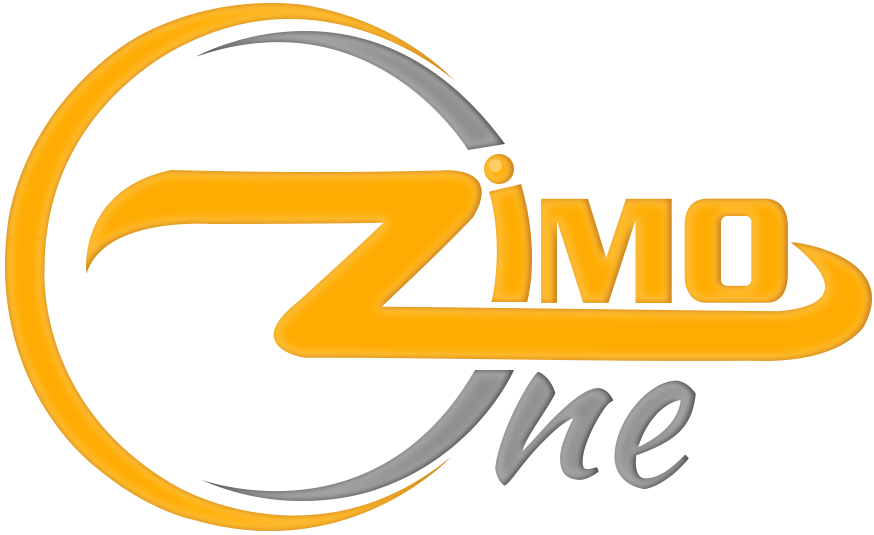Table of Contents
ToggleApp usage has transformed every job and business arena. Applications have become inseparable and indispensable parts of every business world. Users and followers of various types of apps are surging so are the need and demand for building an app. For developing a client-centric app, developers are expected to embrace the changes in the digital sphere. Creating and adapting an app to satisfy all market or user preferences is a crucial aspect of app development. As a result, all developers need to prioritize the use of appropriate tools, libraries, and frameworks. If you are seeking to built an app and confused between .NET MAUI or Flutter app development framework then this blog post is for you.
As market dynamics change due to new technological developments, developers are on the front lines, seeking and exploring the best methodologies, processes, and tools to accelerate app development and ensure high-quality end products.
Using cross-platform frameworks in app development processes allows developers to build a more efficient work environment while also saving money. This strategy increases product market penetration and attracts a broader customer base. A developer must utilize the same code on several devices as part of the process.
This makes us to ponder and draw comparison between NET MAUI and Flutter and which one is a better choice. Let us see and understand by doing the detailed comparison between the two.
1. Understanding Flutter
Flutter, Google’s unique user interface toolkit, is a shining example of efficiency and elegance in cross-platform app development. Flutter’s widget-based architecture and hot reload capability allow developers to create magnificent, pixel-perfect user interfaces with unrivalled speed and precision. Its seamless integration of native features and high-performance rendering engine offer a smooth and responsive user experience across all platforms. What genuinely distinguishes Flutter is its lively community and ecology, which promotes cooperation and creativity. Developers worldwide, from start–ups to IT behemoths, have embraced Flutter’s simplicity, flexibility, and performance, making it the go-to choice for creating beautiful, fast, and feature-rich applications that capture and delight consumers across all platforms.
2. Key Features of Flutter
Flutter enables developers to create code once and release it across various platforms, such as iOS, Android, web, and desktop, saving time and effort throughout development.
- Flutter’s architecture is widget-based, meaning all elements, including layout, styling, and interactions, are treated as widgets. Widgets are highly customizable and reusable, allowing developers to design sophisticated user interfaces with ease.
- High performance: Flutter achieves fast performance and graceful animations by rendering the UI directly on the GPU with the Skia graphics engine. It consistently achieves 60 frames per second, resulting in a seamless and responsive user experience even on low-end devices.
- Access to native features: Flutter gives developers access to native features and APIs via platform channels, allowing them to seamlessly integrate platform-specific functionality into their apps. It allows you to use plugins to access device functionalities like the camera, location, sensors, and more. Flutter app development is gaining wider currency.
- Flutter supports significant customization and theming of UI components, enabling developers to build unique and branded experiences for their projects. It allows developers to bring their design ambitions to life by offering flexibility in styling, fonts, colors, and animations.
- Flutter’s hot reload functionality enables developers to make code changes and observe immediate results without restarting the app. This allows for speedier experimentation, iteration, and troubleshooting, resulting in a more efficient development process. Flutter provides customisable UI components, including buttons, text fields, lists, and navigation drawers. Flutter boasts a thriving community and ecology.
- Developers, contributors, and fans actively contribute to its progress by sharing information, tutorials, and packages. The Flutter ecosystem comprises a large set of packages and plug-ins available through pub.dev, providing solutions for a wide range of use cases and expanding the capabilities of Flutter apps.
3. What are the advantages of utilising Flutter?
- Cross-Platform Development: Flutter allows developers to write code once and distribute it to several platforms, including iOS, Android, web, and desktop, saving time and effort throughout development.
- Single Codebase: Flutter enables developers to use a single codebase for all platforms, reducing complexity and ensuring consistent behavior and performance across devices and operating systems.
- Flutter’s hot reload feature enables developers to make code changes and immediately see the results without restarting the app. This speeds up the development process, allowing for quicker experimentation, iteration, and debugging.
- Flutter includes a comprehensive collection of configurable UI components known as widgets, allowing developers to easily create visually appealing and responsive user interfaces.
Flutter has a growing community of developers, contributors, and enthusiasts who actively contribute to development and provide resources, tutorials, and packages. The Flutter ecosystem includes a broad set of packages and plugins available through pub.dev, which provide solutions for a wide range of use cases and extend the capabilities of Flutter apps.
Overall, these advantages make Flutter a powerful and versatile app development framework for building beautiful, fast, and natively created applications across several platforms, making it a fantastic alternative for developers looking to streamline their cross-platform development process.
Flutter’s Skia graphics engine produces UI directly on the GPU, resulting in high performance. This method guarantees that animations run smoothly, render rapidly, and operate.
Compiled to Native Code: Flutter apps are compiled to native ARM machine code utilizing ahead-of-time (AOT) compilation, which results in excellent performance and efficiency. This eliminates the requirement for a JavaScript bridge or interpretation, resulting in faster execution and lower overhead.
Flutter has little runtime overhead since it just provides the components required for the program to run. This results in reduced app files and shorter startup times, which improve the overall performance of Flutter apps.
Flutter’s flexible design allows for high-fidelity graphics and smooth animations.
4. What are the disadvantages of Flutter?
Flutter aims for consistent 60 frames per second (fps) performance, offering a smooth and responsive user experience. This is accomplished through optimized rendering, effective memory management, and continual performance monitoring and optimization.
Hot Reload: Flutter’s hot reload functionality allows developers to make code changes and see the results right away without having to restart the app. This expedites the development process and enables for rapid experimentation and iteration, resulting in better-performing products.
Overall, Flutter’s combination of hardware acceleration, compiled-to-native code, low runtime overhead, high-fidelity graphics, consistent 60fps performance, and hot reload feature contribute to exceptional performance, making it a top choice for developing high-performance, cross-platform applications.
5. Use cases for Flutter
Flutter is adaptable and applicable to a wide range of industry applications. Here are some common use cases for Flutter:
Flutter is most commonly used to create mobile applications for iOS and Android. Whether you’re creating a simple utility app, a social media platform, an e-commerce application, or a game, Flutter gives you the tools you need to create visually beautiful and performant mobile apps.
Flutter is adaptable and well-suited to a variety of industrial applications. Here are some common applications for Flutter:
Thus, Flutter’s flexibility, performance, and ease of use make it a compelling alternative for a diverse range of use cases, including mobile apps, enterprise solutions, games, and IoT applications. Its developing community of packages and plugins expands its possibilities, making it a desirable choice for both developers and enterprises.
6. What exactly is NET MAUI?
NET MAUI, or.NET Multi-platform App UI, is a cutting-edge Microsoft framework for developing native cross-platform applications. I am switching from Xamarin. Forms simplify the development process by allowing developers to write code once and then distribute it across numerous platforms such as iOS, Android, Windows, and Mac. Its distinguishing characteristic is the delivery of truly native experiences that are adapted to each platform’s own features and UI elements. Developers can use a single codebase to construct responsive, visually appealing interfaces with a wide range of adjustable UI components. Built on.NET 6, .NET MAUI is compatible with cutting-edge technology and integrates seamlessly with Microsoft’s popular IDE, Visual Studio.
7. . NET MAUI’s main characteristics
Cross-platform development MAUI enables developers to write code once and deploy it across several platforms, saving time and effort over creating separate codebases for each platform.
Native User Experience: By exploiting platform-specific capabilities and UI components, NET MAUI-powered applications provide a native user experience across all platforms. This suggests that consumers will have a familiar interface suited to their unique devices.
Single Codebase: .NET MAUI allows developers to construct a unified codebase for their applications, eliminating the need to manage several codebases for different platforms. This not only speeds up development but also simplifies maintenance and upgrades.
UI Components and Controls: NET MAUI contains a variety of UI components and controls that may be customized and altered.
Support for.NET 6: .NET MAUI is developed on top of.NET 6, the most recent version of the.NET framework. This provides compatibility with the latest features and advancements, as well as access to a diverse set of libraries and development tools.
Integration with Visual Studio: .NET MAUI works smoothly with Visual Studio, Microsoft’s integrated development environment (IDE), giving developers a familiar and powerful toolset for building, debugging, and testing applications.
.NET MAUI is an open-source framework that enables developers Advantages of.NET MAUI vs. Flutter: Comparisons and contrasts.
Overall MAUI provides a modern and fast solution for developing cross-platform native applications, enabling developers to create high-quality experiences for users across various devices and platforms.
8. Use cases
.NET MAUI is appropriate for a variety of applications and scenarios, including:
Cross-Platform Mobile Apps:.NET MAUI is suitable for creating mobile applications that need to operate on many platforms, including iOS and Android. It enables developers to create native user experiences using a single codebase. let it be Android app development or iOS app development both are possible with .NET MAUI.
Desktop programs MAUI, which supports Windows and macOS, can be used to create desktop programs that provide consistent user experiences across several operating platforms.
Tablet Applications: The ability of.NET MAUI to adjust to varied screen sizes and form factors is useful for applications aimed at tablets, such as iPads and Android tablets.
Line-of-Business apps:.NET MAUI is ideal for developing line-of-business apps that need to integrate with backend services, manage data, and handle complicated business logic.
Consumer Applications: Whether you’re creating a social media app, a productivity tool, or a gaming game, MAUI can help you create rich and compelling user experiences.
Enterprise Applications: Businesses can use.NET MAUI to create internal tools, employee-facing applications, and enterprise resource planning (ERP) systems that need to be accessible across multiple devices and platforms.
Prototyping and Proof of Concept: NET MAUI is suitable for rapid prototyping and proof of concept development, allowing developers to design and test concepts across several platforms before allocating more resources.
Moving on from Xamarin.Forms are for firms that have previously used Xamarin.Forms for cross-platform development MAUI provides an easy conversion path with more features and capabilities.
Drawing a comparison between .NET MAUI and Flutter
.NET MAUI and Flutter are both frameworks for developing cross-platform applications, although their methodologies and technologies differ. Here are the similarities and differences between them:
9. Similarities
Cross-Platform Development: Both frameworks are cross-platform compatible. Both are cross-platform development frameworks. With MAUI and Flutter, developers can create code once and publish it across several platforms, including iOS, Android, and possibly others.
Native Performance: Native performance is the second common factor between the two frameworks. Both frameworks strive for native performance by compiling programs to native machine code rather than relying on web technologies such as JavaScript or WebView.
Rich UI Components: Both.NET MAUI and Flutter offer a large number of UI components and controls that developers can utilize to construct visually beautiful and responsive interfaces for their apps.
Open source: Both frameworks are open source, so developers can contribute to their development and report concerns.
10. Differences
Language and Ecosystem: NET MAUI use C# and.NET, which are commonly used in enterprise and desktop development, whereas Flutter employs Dart, a language specifically built for creating user interfaces. This means that.NET developers may find.NET MAUI more familiar, but developers from other backgrounds may prefer Flutter.
Development Environment: NET MAUI is strongly integrated with Microsoft’s IDE, Visual Studio, giving a familiar environment for.NET developers. Flutter, on the other hand, offers its own set of development tools, such as the Flutter SDK and Flutter plugins for popular IDEs like Visual Studio Code and Android Studio.
Platform Support: While both frameworks support iOS and Android,. NET MAUI also intends to support Windows and macOS, allowing developers to target desktop platforms in addition to mobile. Flutter has experimental desktop support, but it is not as mature as that of.NET MAUI.
UI Rendering: NET MAUI employs native controls provided by the underlying platform, resulting in applications that appear and feel native across all platforms. Flutter, on the other hand, draws UI elements using its rendering engine, which can cause minor changes in appearance and behaviour between platforms.
Community and Ecosystem: Flutter has a big and active community that provides significant documentation, packages, and resources. While MAUI benefits from the larger environment, which includes libraries and tools, it may not have as much community support and resources as Flutter.
To put it simply, both.NET MAUI and Flutter provide robust cross-platform application development alternatives, each with its own set of advantages and disadvantages. The decision between them is determined by developer preferences, platform needs, and ecosystem considerations. The decision between MAUI and Flutter is influenced by several criteria, including developer expertise, platform requirements, and project goals. .NET MAUI builds on the familiarity of the C# and.NET ecosystems, providing easy integration with Visual Studio as well as extensive support for Windows, macOS, and mobile platforms. Its emphasis on native controls ensures consistent user experiences across multiple platforms. Flutter, on the other hand, with its Dart language and proprietary rendering engine, offers a diverse collection of UI components as well as a vibrant community, but with a distinct development experience. While Flutter excels at rapid prototyping and has a large community MAUI provides a compelling alternative for organizations and developers who are already involved in the Microsoft ecosystem. Finally, the choice comes down to individual preferences project requirements, and long-term strategic considerations. If you are looking for a mobile app development company or a company that can provide you with a reliable solution for app development, then you can turn to Zimo. One, a company adept and skilled in providing reliable solutions backed by a team of pro app and web developers,


